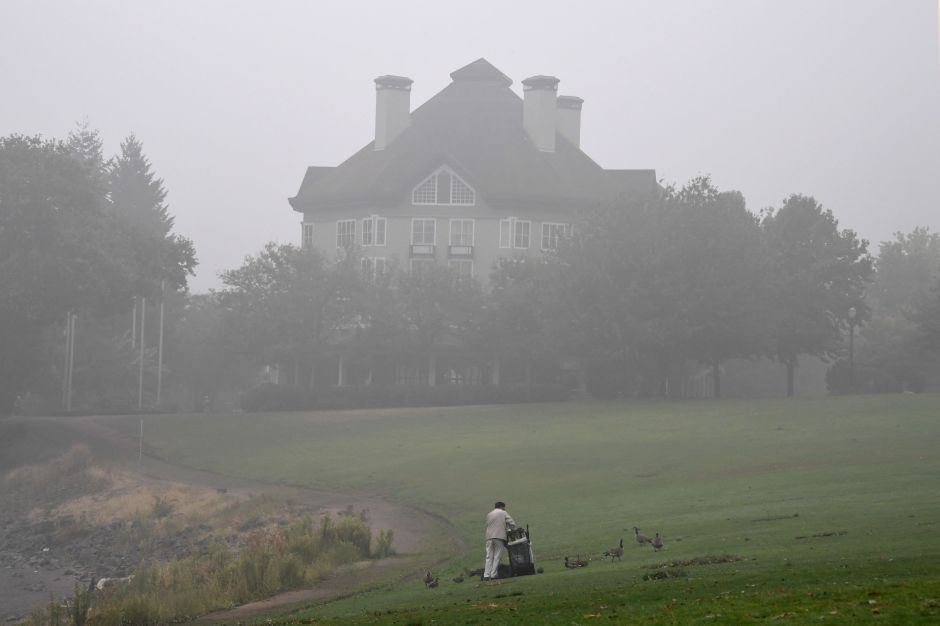The richest 1% of the world pollutes the planet more than the 50% of the poor | The NY Journal
[ad_1]
“Neoliberal policies have favored a few, the richest, and created this climate tension”

Fire smoke near a luxury home in Oregon.
Photo:
ROBYN BECK / AFP / Getty Images
Rich and destructive.
The richest 1% of the world’s population (63 million people) is responsible for more than twice the pollutant emissions into the atmosphere than the poorest half of the planet (3.1 billion) between 1990 and 2015, according to a report by the organization international Oxfam Intermon posted this monday.
Oxfam Intermon In the report ‘Combating carbon emissions inequality’, the two groups most affected by this imbalance are the least responsible for the climate crisis, that is, the poorest people and those most at risk of exclusion and future generations.
The document is published on the eve of the annual meeting of the United Nations General Assembly to study the global situation, including the climate emergency, and urges governments to take advantage of recovery plans from the pandemic to adopt measures that favor the reduction of emissions and socio-economic inequalities of the world population.
The study carried out jointly with the Stockholm Environment Institute, reveals that in a correlation of the level of emissions and economic income, the richest 10% (630 million people) is responsible for more than half (52%) of the carbon emitted into the atmosphere.
OI’s climate change spokesperson, Paula San Pedro, explained that the richest consumerss “found in the United States and Europe”, which dismantles the theory of recent years that has focused the responsibility for the increase in emissions on the growing consumption of the middle class in China and India.
In both Asian countries, millions of people have been lifted out of poverty and this translates into an increase in carbon emissions, however, “emissions linked to the consumption of the richest in Europe and the US have continued to grow” .
And the highest percentage of emissions of this richest percentage “is concentrated in any transport mechanism, from the jprivate ets to a sports car, although it is surprising“, According to San Pedro.
The research assesses carbon emissions from consumption with economic income between 1990 and 2015, “The 25 years in which humanity doubled the amount of carbon dioxide in the atmosphere” compared to the period 1890-1990.
The study also indicates that the richest 10% squandered a third of their global carbon budget remaining to keep the planet’s temperature below 1.5 degrees – as recommended by scientists – compared to 4% of the poorest half of the world’s population.
The carbon budget is the amount of carbon dioxide that can be emitted into the atmosphere without causing global warming to exceed 1.5 degrees.
If the emissions ofl 10% of the richest population continues at the rate it is taking, “the carbon budget will be exhausted in 2030,” according to the OI spokeswoman.
For this reason, at this time when recovery plans are being studied, “it is essential that this message remains, it does not serve to return to the previous normality in which neoliberal policies have favored a few, the richest, and created this climatic stress ”.
“The emissions map reflects that carbon consumption has served to enrich a few and not lift people out of poverty. This model has expired and it is urgent to start a new one, ”says San Pedro.
“The recovery has to take these variables into account,” he says, because the variables show “greater inequality, with 55% of the world’s population on less than $ 5.5 a day, which is the poverty threshold and where that gap between rich and poor is increasing ”.
Any plan has to take into account these considerations and these “most vulnerable and marginalized populations, which of course are in Spain”, and place them “at the heart of its climate transition”.
“Recovery policies must ensure that the just transition leaves no one behind,” according to San Pedro, who emphasizes that women who head families are between 30 and 120% more likely to fall into energy poverty, That a man.
However, there are fears that there will be a rebound again as prevention measures are relaxed to prevent the spread of the spread of the coronavirus causing the pandemic.
.
[ad_2]
Source link



